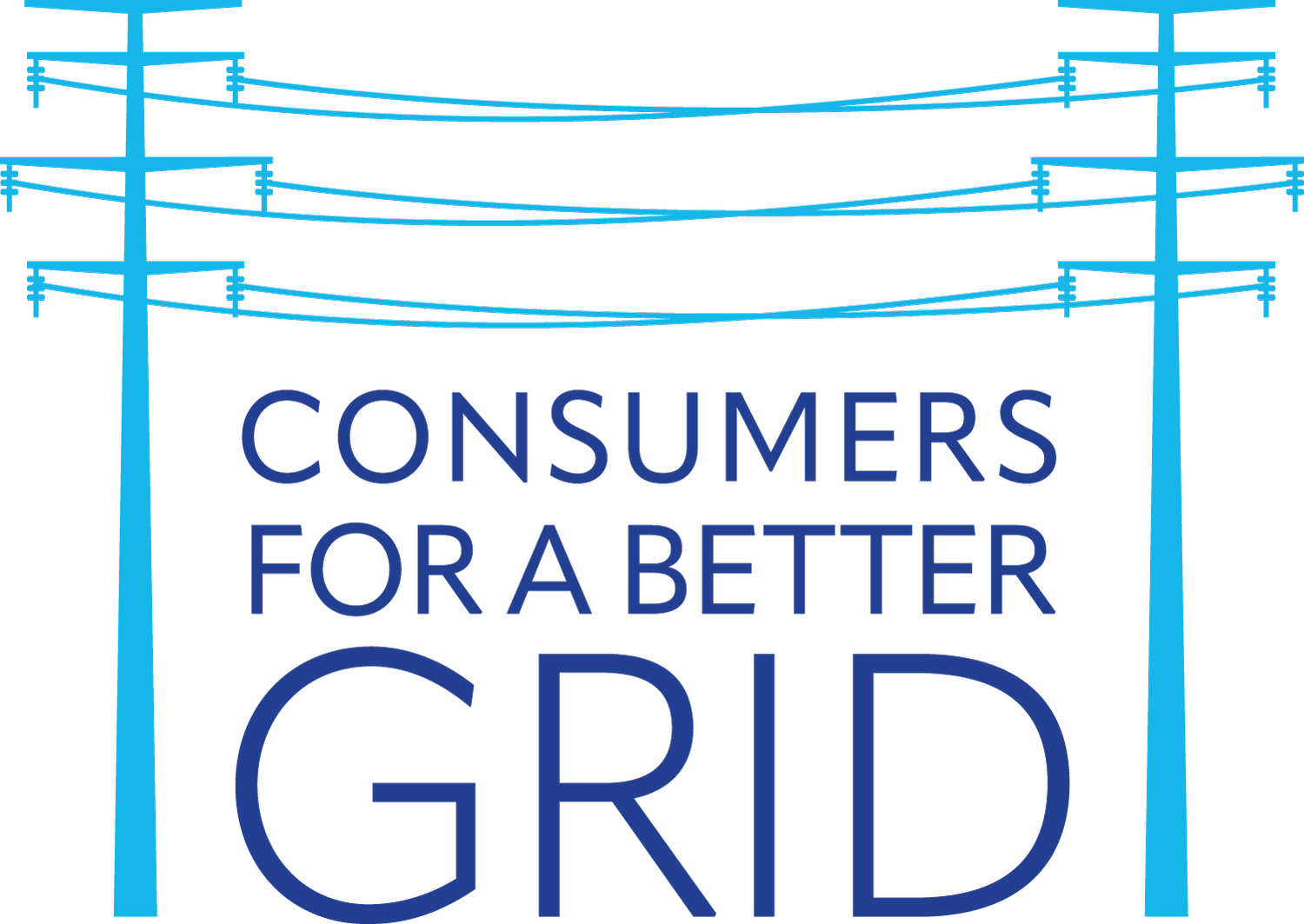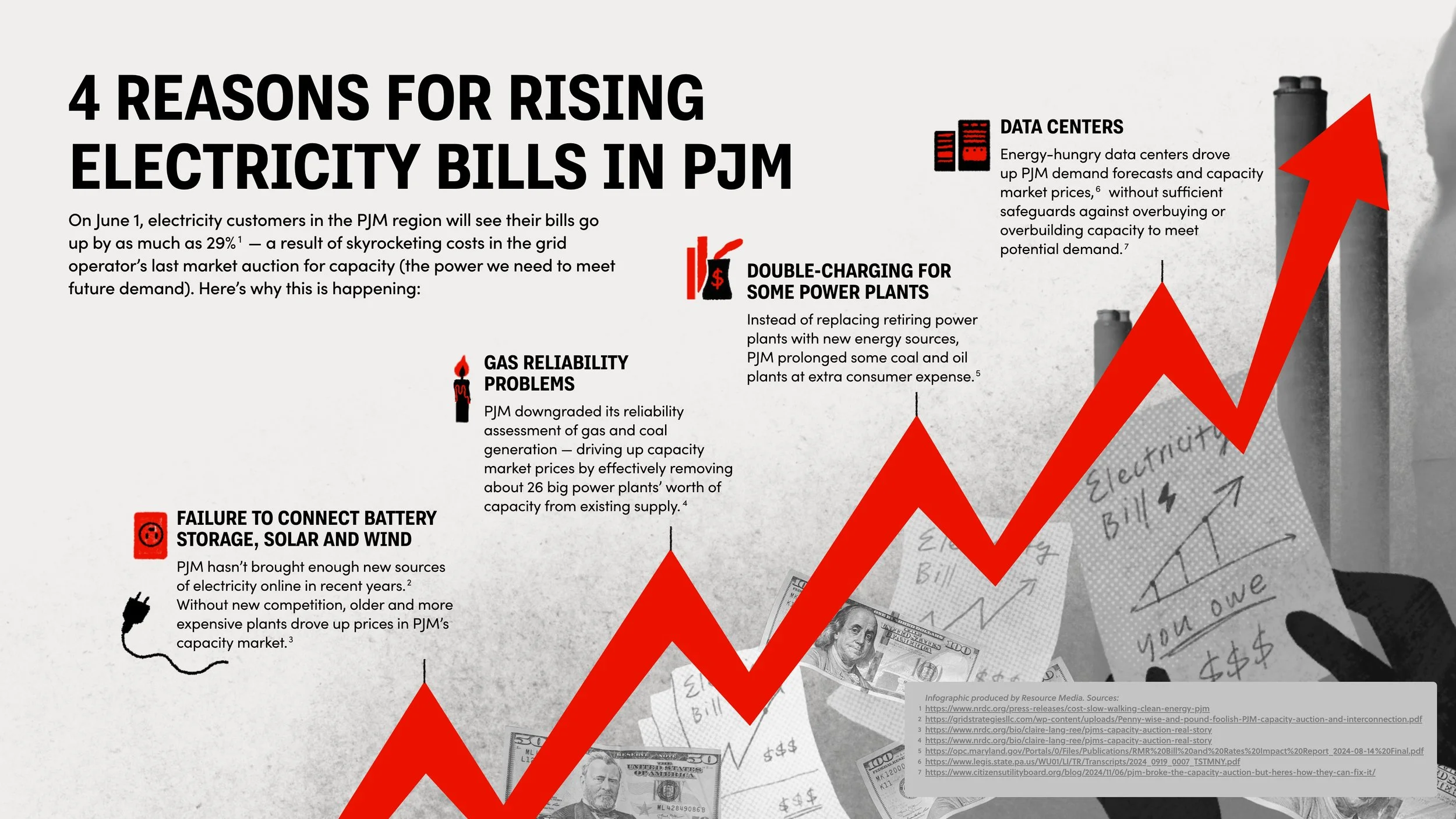Containing Consumer Costs
What's it all about? Decisions made at PJM impact your electricity bill. We are constantly pushing PJM to reform its rules to make them more consumer-friendly.
1. The broken capacity market: PJM’s flawed way of securing and pricing reserve power (capacity) often leads to higher bills for electricity customers. PJM’s capacity auction sparked an electricity price spike in the summer of 2025, and prices are likely to stay high for the foreseeable future. Consumer advocates have sought reforms to bad market rules to make sure that all the electric resources available to us are reflected in pricing. And two major things have to happen to get the market back on track: the interconnection queue has to begin working again and we have to control data center demand.
2. The battle against “zombie power plants”: Rather than helping to speed up clean, affordable energy projects that could bring down costs to consumers, the federal government is increasing our costs by leaning in on the most expensive resources in the market: aging fossil fuel plants. Consumer and environmental advocates, including the Citizens Utility Board, are challenging U.S. Department of Energy 202(c) orders to keep decades-old gas, oil and coal plants open past their closure dates in Pennsylvania and Michigan–at extra cost to consumers. The DOE vaguely cited an “emergency situation” regarding reliability, but consumer advocates argue that no emergency justified the Department’s orders, which could cost consumers millions in higher electric bills. “The DOE’s maneuver is not about reliability–this is a handout to the fossil fuel industry, paid for by consumers across the region, including Illinois,” CUB said in a statement about the Pennsylvania plant.
3. The demise of energy efficiency in the capacity market: In 2024, PJM formally eliminated the use of energy efficiency as a way to bring down capacity prices. We had long argued that the way PJM accounted for efficiency was flawed and anti-consumer–but that was a reason to reform market rules on efficiency, not eliminate efficiency altogether! While we work for reforms, we want to stress: Efficiency is still a way for consumers to lower their energy costs at home (read our tips). The cheapest, cleanest kilowatt-hour is still the one you never use, even if PJM doesn’t use it to lower capacity costs for consumers.
4. Circuit breaker: In an extreme winter storm when natural gas plants fail to operate, there is high demand but limited supply. The higher prices will not incentivize a power plant to ramp up operations if it's not able to function in the bad weather. There should be a price cap to prevent ratepayers from getting slammed with high costs, like what happened during Winter Storm Uri in Texas. We have pushed for a "circuit breaker"--a mechanism to cap prices when regular market signals go haywire--something that is becoming more common with climate change.
Why should consumers care? Through a special "capacity" auction run by PJM, we pay power generators to have reserve electricity on hand in case demand skyrockets. But the rules that govern this auction--and how we price capacity--are stacked against consumers. In fact, two recent auctions–2025 and 2026–led to record-high prices, leaving customers to pay skyrocketing power bills.
Resources:

